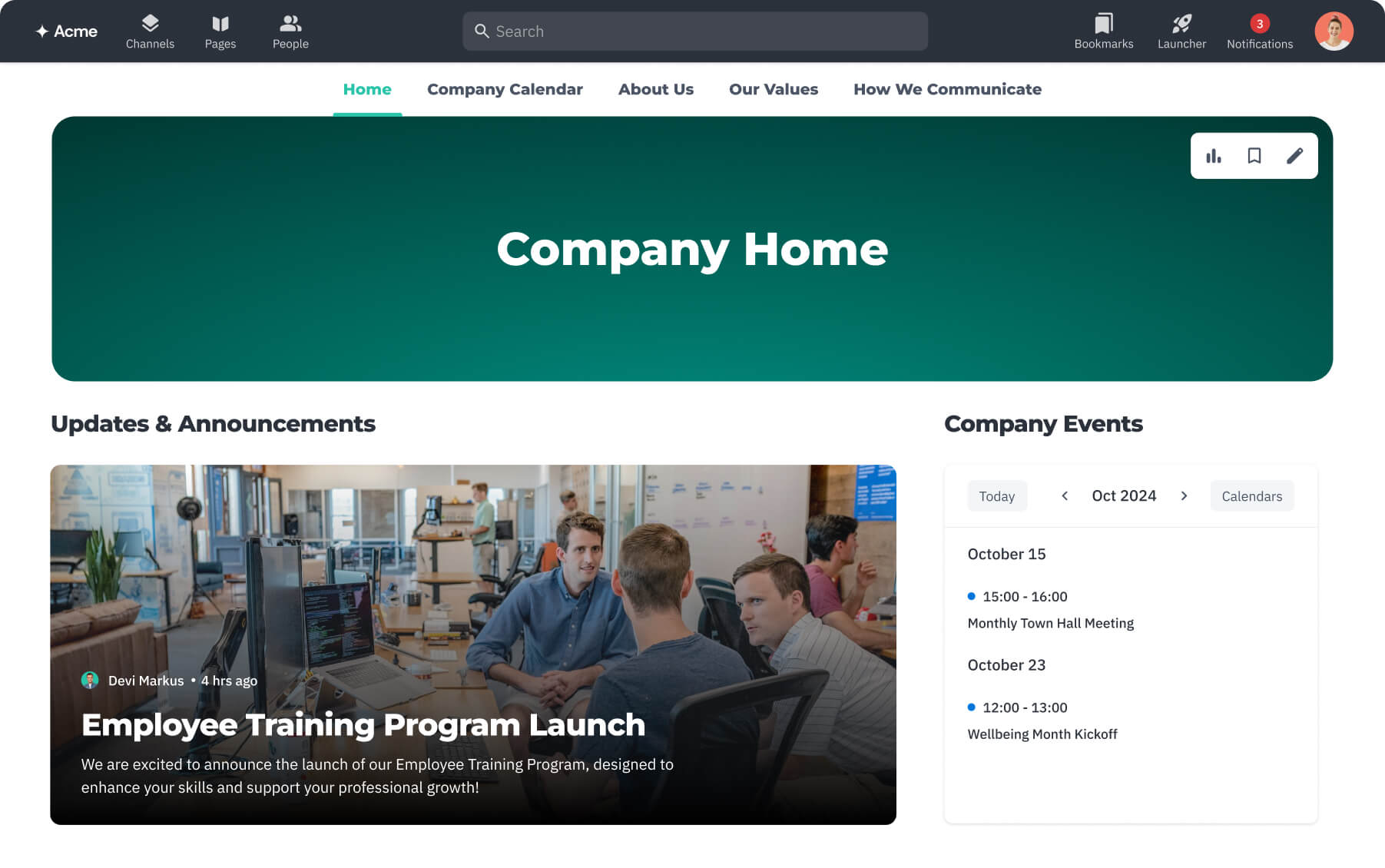
2024 may not be the best year for some business owners. Why? It sees the start of the Peak 65 Zone, where around 11,200 Americans will turn 65 and retire every single day. Not only is this putting pressure on the social security system, but it represents a brain drain on the businesses of America. Of course, it’s not only retirement causing this, nor is it confined to the USA.
Many countries are seeing a net migration loss as many of their brightest young workers look abroad for better opportunities. How do you look to create knowledge retention policies to retain the skills, experience, and knowledge lost due to these changes?
What is Brain Drain?
Put simply, brain drain refers to organizations losing talent - in terms of both skills and experience - to external factors such as migration or retirement. It can have adverse effects on a business if the personnel they lose are vital cogs in the operational machine.
American businesses face two types of brain drain. The first is the effects of the Peak 65 zone, which sees the highest number of retirees annually compared to ever before. The second is emigration, which now has more than 5 million Americans living abroad. While the phrase usually refers to the migration factor, the reality is that retirement also impacts businesses.
For them, brain drain is the potential loss of individuals and the sum of their expertise. Those individuals may possess certain valuable skill sets and knowledge that has been gathered over many years working in their industry. Whatever the root cause, that brain drain can negatively impact every area of the organization.
Another potential danger to your skilled or knowledgeable workforce is other businesses. For example, if you operate inbound call center services, then you’re already in a sector with high employee turnover. If a competing business offers a better salary and benefits package then you could see your best staff leave to join the other business.
It’s best to view responding to brain drain as fighting a war on multiple fronts. You need to identify what threats apply to your organization, then devise tactics to combat those threats. Let’s take a look at some common methods - both for retirement and in general - you can employ.
Preparing For Your Staff Retiring
By 2050, it’s projected that there will be 82 million Americans aged 65 or over. These workers possess decades of knowledge and skills, as well as an intimate knowledge of a company’s processes and systems and its company culture. When they leave, that’s a lot of potential knowledge lost with them.
Businesses need to tackle this head on, and luckily, in most cases, you'll know when an individual is due to retire. They may even have given your HR team an exact date they will be leaving. This allows you time to prepare and/or start the recruitment process to replace that person, but what else can you do?
1. Knowledge-sharing culture
This should be part of your general knowledge retention strategy but is especially useful if you are experiencing (or will experience) high retirement turnover. You want knowledge taken out of silos and shared across your business. To do so, you need to develop initiatives that foster that sharing and provide the tools and platforms – such as a company intranet – that help facilitate knowledge sharing.
As with anything, these initiatives should be supported from the top down. This can be especially important when you have identified a future loss of management and C-suite positions. Having good initiatives in place means you can foster a cycle of continuous learning.
2. Mentorship
You may have a list of employees who will be retiring over the next five years. This can allow you to develop a succession plan for those positions. In many cases you will be promoting from within, though you may also have to look at external recruitment. One ideal way to make that succession plan efficient is to have an in-house mentorship program.
Let’s say one of your IT managers is due to retire in a year. They were the person who oversaw the implementation of your TOGAF framework and, once they have gone, no one has more than cursory knowledge of TOGAF. Having that person mentor other IT staff can mean you don’t end up with a skills gap, and their replacement doesn’t have to start from scratch.
3. Documentation
You should view your older workers as a goldmine of knowledge and information. They should be closely involved in initiatives to share and document that knowledge. In addition to mentorship programs, look at how to collect, document, and share that knowledge. That documented knowledge can then be shared via an intranet or other collaborative tools.
Develop training programs that share skills in real-time and record that information for future use. Make a list of your most essential processes and systems and who has responsibility for, or the most information on, them. Good documentation can make cross-training more effective and can ensure that critical knowledge isn’t lost.
4. Reserves
Retired means retired. Right? Not always. If you have a pool of experienced workers who have now retired, consider building a reserve workforce. They may not want to be involved full-time, but you will find that many of your retirees may be happy to work on a part-time or even consultant basis. This can give you access to knowledge and skills that are important to your business.
You can utilize these workers in several ways. They can work with HR and identify different parts of your recruiting funnel that will attract competent replacements. You can also use them to run training programs that focus on their skills or they can be the leaders of your mentorship programs. Look at how Oleeo’s recruiting funnel solutions can help you.
General Knowledge Retention Tactics
While the tactics outlined above can help with loss of talent due to retirement, they can also be applied generally as part of your overall knowledge and employee retention strategies. Given your workforce could face multiple threats when it comes to reasons for leaving, what else can you do to boost employee retention rates and improve knowledge retention tactics?
1. Benefits
Offering a solid benefits package has to be the foundation of any employee retention strategy. Smaller businesses may find it hard to compete but can look at interesting ways to boost their additional benefits, such as share options. Your first step is to research the market and your competitors to ensure you are not offering lower salaries.
However, the actual salary is only part of the story. Where remuneration packages often come into their own is the additional benefits you offer. These can be the deciding factor when it comes to an employee choosing to remain with you. You should also remember that some benefits are required by law, some may be industry standards, and others are viewed as extras.
Some of the benefits you could consider include:
- Health. Look at subsidizing health or dental insurance. You can also consider having in-house wellness or mental health support programs.
- Bonuses. These could be performance-related, either individually or by company performance.
- Childcare. If you have a lot of working parents, providing or subsidizing child care can be cheaper than the costs associated with employee turnover.
- Retirement. Help your employees plan for their retirement with one or more pension savings plans.
- Training and education. Your employees want to progress in their careers. By offering training or subsidizing education costs, you’re investing in their futures and yours.
- Flexibility. If possible, offer flexible working hours or work-from-home/hybrid working models. These can help improve employees’ work-life balance - and keep hold of some of that migrating young talent.
This is not an exhaustive list of benefits. You can add anything to the program, from travel expenses to theater tickets.
1. Create a great company culture
If your employees have high levels of job satisfaction, then they are less likely to look elsewhere. In fact, satisfaction levels amongst people who do not intend to seek another job average 76.3%. Your benefits package may be the foundation, but your company culture is the walls and roof of your employee retention horse.
Having a great company culture doesn’t happen with the wave of a wand. Your management needs to be communicative and approachable. Every member of staff needs to feel listened to and who knows, maybe an idea from your staff could revolutionize your operations. Have good communication throughout your business and make it easy for individuals and teams to collaborate.
2. Promote diversity and inclusivity

If you don’t already have a plan to tackle this in place, there is good diversity and inclusion recruitment advice from Oleeo. This is more than just thinking about positive discrimination, it’s about widening your recruiting net and ensuring that you fully support your employees regardless of gender, sexual orientation, etc. You should fully audit your current workforce and look to remove any salary disparity.
For instance, women receive 16% less salary than their male counterparts on average. If you can offer equality within your own workforce, you signal to others that you are a good and inclusive employer. In turn, this can make you stand out from other potential employers.
3. Remote/hybrid working
With 12.2% of the US workforce now working fully remotely, remote and hybrid working is here to stay. The suitability of these patterns for your employees will depend on the nature of your business; a manufacturing business may be able to identify less suitable roles than an insurance company, for example.
It’s also worth surveying your employees to see how much appetite there is for a switch. But you’ll find that many staff – especially parents of young children – will value the work-life balance offered by remote/hybrid working. It can be another step towards boosting employee motivation and satisfaction, improving your retention rate, and improving knowledge retention.
Hybrid and remote working can also be a solution for workers who want to emigrate, even if temporarily. If their role allows for it, look at how you can support them to work remotely so that their knowledge is still retained within the business.
4. Cast a wide net
You won’t always persuade people to stay. They may be retiring or relocating for family reasons. You have to have tactics that mitigate any brain drain, regardless of the reason for it. There are many applicant tracking system benefits, but one to consider here is that you can keep people in your system even when they are unsuccessful in their original application.
It may well be that to fill any vacancies, you need to cast your recruitment net wider. That can mean staying in contact with previous applicants and looking at applicants from a wider geographical area. If you do look at a wider area, then you need to look at additional package benefits such as relocation expenses.
The Takeaway
The problems posed by the different types of brain drain are not going to go away quickly. That means businesses need to look at different strategies, both in terms of retaining and attracting talent. It’s also important to remember that it’s not just about the people, but the accumulated knowledge your staff have gathered during their tenure with you.
There is no one-size-fits-all strategy. Instead, you need to look at the particular issues you face as an organization and find what tactics work best for you. A combination of knowledge sharing, benefits, and company culture may be the ideal route for most. It’s also worth remembering that this is a long-term problem and that you should be looking for tactics and solutions that will help you for years to come.


